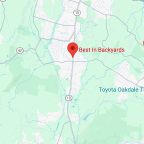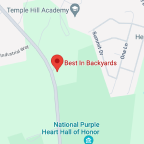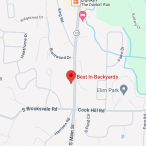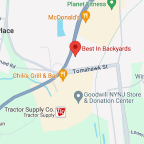Build your backyard wishlist now! Shop our holiday sale


outdoor structures that frame your backyard
From storage sheds and pergolas to pavilions and privacy fences, we’re here to bring practical solutions to your backyard.
OUTDOOR STRUCTURES

SHOP OUR MOST POPULAR PRODUCTS

outdoor privacy solutions
Whether creating a secluded backyard oasis or defining the boundaries of a property, our outdoor privacy structures blend functionality with aesthetics, making them an important element to your backyard’s design. From fences to patio decking, our outdoor privacy solutions are:
-
Available in multiple materials and finishes that provide durability and design all in one.
-
Professionally installed to help you properly navigate any backyard terrain.
-
Available to be installed with other customized privacy structures, including our selection of retaining walls.

outdoor space solutions
Whether you are looking for a pergola to create a new shaded area for entertainment or surface walkways to create more accessible regions within your backyard, our selection of functional and decorative outdoor space solutions are designed to make it easy for you to:
-
Help implement key structures you can build on with our outdoor living products.
-
Select from a variety of materials and colors to match your styles.
-
Harness the potential of any backyard –regardless of size and stage of design.

outdoor storage solutions
Whether you are looking for sturdy sheds, detached garages, or pool houses, we offer a wide selection of outdoor storage solutions that you can depend on year-round. All our outdoor storage solutions are:
-
Available in multiple sizes to accommodate specific storage needs and budget sizes.
-
Professionally installed to ensure proper leveling and other safety measures are incorporated.
-
Available in a variety of colors and styles to match your home’s aesthetics.

retaining wall
From erosion control to leveling playing areas, we offer a wide range of materials and designs that seamlessly blend into the landscape while serving a crucial function in preserving the integrity and usability of your outdoor environment.
NEW PRODUCT!
SEE OUR BRANDS














